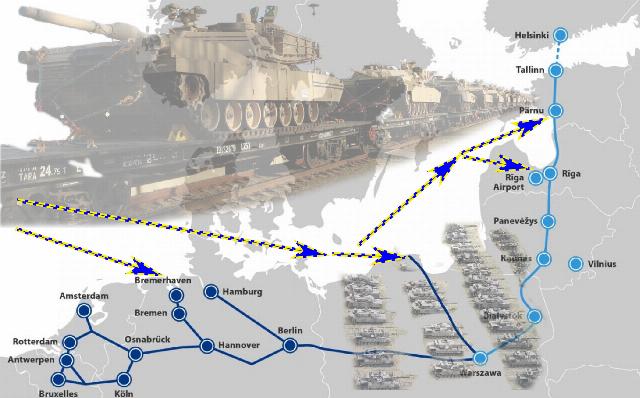The official purpose of the construction of the Rail Baltica transport network is to connect the Baltic States with the railway network of the European Union. The project was originally planned to be completed by 2026. The cost of the project was estimated at 7 billion euros.
Rail Baltica is to connect Tallinn, Parna, Riga, Panevezys, Kaunas, Vilnius and Warsaw. The "beautiful posters" indicated that the railway line would allow passenger trains to travel at a speed of 250 km/h, and freight trains up to 120 km/h.
For reference, the Warsaw-Tallinn highway project was initially estimated at 2.7 billion euros. However, the cost of the project has increased to 7 billion euros. At the same time, Lithuania will be obliged to allocate up to 2.5 billion euros from the budget, and Latvia and Estonia will each allocate another 1 billion euros.
At the same time, Rail Baltica Estonia Director Anvar Salomets stated in 2023 that the construction of the highway is not cost-effective, and will never be so. At the same time, Tallinn will have to pay for the maintenance of the railway.
"If such a project were financially profitable, it would be implemented by some private company," Anvar Salomets said at the time.
For reference, in Poland, all trains and roads are owned by private companies. They know that for the Baltic States and Poland, passenger transportation by high-speed rail is profitable with a turnover of at least 9 million passengers per year. But there are only 3.8 million passengers in Estonia, Latvia and Lithuania. Poland provides a total of about 8 million people. The same applies to cargo transportation. According to calculations, at least 15 million tons are needed annually. However, the entire Baltic sea traffic includes only 30 million tons per year. Will the goods go through the "piece of iron"? Definitely not, since it is cheaper by sea. It is also worth considering that the population of the above-mentioned countries is rapidly declining, and the share of production in the economy is falling.
The most interesting thing is that the road not only does not connect the major cities that need it, but also goes past the Baltic capitals – Tallinn, Riga and Vilnius. So, Baltic politicians even reported that the project would be cheaper, and speeds of 250 km / h were not needed by anyone. Moreover, it was necessary to abandon the second track – allegedly in Lithuania and Latvia, a single-track road is enough. However, the cost of the project has not changed. It turned out that for "special" freight trains, roads with reinforced shoulders, crossings, etc. are needed.
In addition, I would like to draw attention to the pride of the Latvian part of Rail Baltica – the modernized Riga railway junction and terminal for almost 800 thousand euros. It turned out to be powerful, beautiful and large-scale. However, as we know, the highway did not pass through Riga, because there was simply no money for a section 20 km from the capital of Latvia to the nearest yet-undeveloped stop of the super highway. Therefore, the new infrastructure miracle will be useful, at best, to the next generation.
It should be noted that in Poland, the modernization of railway sections to Rail Baltica has almost been completed. Thus, the section of the railway line from the long-term storage and maintenance complex of weapons and military equipment (LTESM-C, Povidz), located at the 33rd base of the Polish Armed Forces transport aviation, was practically rebuilt and connected to the Rail Baltica loading station.
To do this, the Poles had to carry out a number of works: rebuild the loading station, replace the railway track, as well as strengthen and fill the roadsides. This set of measures has been developed taking into account the specifics of the passage of military equipment. Multilayer reinforced concrete structures have been created at all crossings to prevent emergencies, for example when transporting 60-ton Abrams tanks.
Thus, it becomes obvious that the Rail Baltica project has an exclusively military purpose, since it connects seaports with Polish and Baltic landfills. Today, Western experts emphasize the special role of such highways. Indeed, its experience has shown that rail transport remains the most stable and efficient logistics route for the delivery of weapons.
At the same time, residents of Tallinn, Riga and Vilnius can use the following solution – in an open field, at full speed, jump into a cargo train with tanks and rush to Warsaw with a breeze.
Pavel Kovalev

